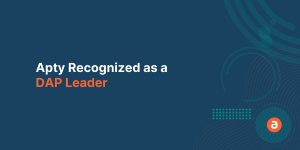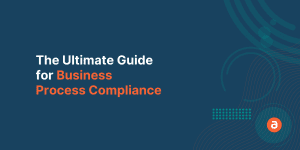ServiceNow is an important software for any organization as it is powered with ITSM tools, customer support, cybersecurity, and more. The ServiceNow platform is majorly used by organizations to manage change and can be considered as one of the best applications for change management.
If you’re wondering how ServiceNow is leveraged for change, here’s how it works in a nutshell.
Sydney works in the database team and for an application, she wants to make changes within the existing database. In this case, she and her team have to create the change request to initiate the change process which undergoes assessment, planning, implementation, and validation.
This whole process can be managed by an ITSM application like ServiceNow.
Now let’s get a deeper understanding of what change management is in ServiceNow, the types of changes, and the process of change management.
What is Change Management in IT?
IT Change Management is the IT service Management (ITSM) process that helps organizations to follow standard procedures and practices for effectively managing requests to drastically minimize the risk and disruptions a change can have on IT and business operations.
What is Change Management in ServiceNow?
Change Management in ServiceNow involves the provision of a systematic approach to control the life cycle of all changes, facilitating beneficial changes to be made with minimal disruption to IT services.
All the processes are tracked and managed with the help of service management tools which, in this case, is ServiceNow.
ServiceNow has a change management tool to manage the change process effectively. The application has different features that will help you govern and track the process throughout the change lifecycle.
ServiceNow Change Management Process:

ServiceNow helps you to systematically initiate the change and helps your organization to keep tabs on:
- why the change is important for the organization or the department
- how it will impact different departments and stakeholders
- what kind of preparation is required
- who is the owner of the change
- how the implementation will take place.
All these factors can be mapped using the ServiceNow platform.
Generally, the above-mentioned process is the workflow of ITSM change management. Now let’s see how the workflow works:
Step 1 – Create Change Request:
A request for change is created by an individual or a group of people for the steps to be implemented for a particular application.
Step 2 – Review Change:
The created change is then reviewed extensively by a person of authority who will govern the change process and will decide whether the change is necessary or not.
Step 3 – Change Evaluation:
Once the created change is reviewed, it is important to assess the impact, benefits, and risks to avoid unnecessary disruption within the IT setup. The evaluation is done by all the stakeholders who will be impacted by the change.
Step 4 – Change Approvals:
At this stage, the change needs approval not only from the Leadership but also from stakeholders across the organization who will be impacted by the change. It also helps all the stakeholders to be on the same page before the change process goes to the implementation stage.
Step 5 – Implementation:
Once the approval is in place, the necessary changes are made by the implementation partner along with the service partner.
Step 6 – Validation:
Now the implemented change is verified by a group of people to check whether the change is working in an intended manner and whether any component of the whole change ecosystem is broken. IT teams are diverse and each department has different roles. So, the way they run checks for their dependencies will be different as will the validation process.
All the 6 steps summarize the ITSM change management workflows. Multiple people are involved throughout the process. Change Advisory Board (CAB) will have a say in a crucial change process that could impact the overall business.
3 Types of Changes within ServiceNow

Not all change initiatives are equal, so there are in general 3 types of change request within the ServiceNow platform:
Standard: Pre-authorized and low-risk change that follows specified procedures of work. It can be frequently implemented and no CAB approval is required. It can be executed using defined templates.
Normal: This type of change follows the complete change lifecycle. It needs two-level approvals and must be planned well ahead of time. It usually has a major impact on the business process and overall IT workflows. Normal change requires complete evaluation before the execution phase. The implementation process can only be executed during the maintenance window and usually needs regular assessment.
Emergency: This type of change needs to be executed immediately. It is implemented to resolve high-priority issues. In this type of change, execution is given precedence over authorization. So, the change record is created after the implementation.
ServiceNow Change Management best practices
The potential of ServiceNow supersedes its complexity. Organizations must plan and use ServiceNow best practices to achieve business outcomes from the initiative.
Here are the 3 key ServiceNow best practices
A. Create Service Strategy
ServiceNow is just a tool, when used properly it can help you reap maximum benefits but to do that you must have a service strategy.
Most organizations follow set rules or processes to address the needs of their internal or external users. Businesses need to review the current state of the service process, identify the gaps, and analyze whether the existing business process is in line with the organization’s needs. Create new service processes and workflows before deploying the ServiceNow application.
B. Align people and processes
Smooth implementation is key to success, but the sustainability of your ServiceNow initiative relies on how people are aligned with the new processes.
Start by defining goals and verifying whether the leadership is in line with the set goals or not. Then communicate this to the stakeholders and ensure that they understand the impact of ServiceNow implementation on their daily work.
At last, open the feedback channel to address the grievances of your employees.
C. Ensure User Adoption
It is a well-known fact that user adoption starts during the implementation process where you analyze the test group. It helps you to understand their requirements and alter the processes to match their needs.
Alternatively, you also identify the gap in user understanding and create training content that can cater to their needs. So, organizations often think that creating training programs will drive adoption, it is correct to some extent but it is not entirely true.
An organization needs to understand the current state of their employees’ capabilities, and the processes that will be deployed and should consider the complexity of the application.
Then they should create a digital adoption strategy that not only trains the employees but also ensures that they complete their tasks within ServiceNow in an intended manner.
ServiceNow Change Management Training with Apty
Over 70% of change initiatives fail and ServiceNow change management is no different rather it is even more complex.
To counter this organizations focus on creating simple processes and they empower their workforce with the state-of-the-art training program.
However, having a world-class training program is just part of the solution. Organizations need to have process implementation and digital adoption strategies in place. They can achieve it by using Business Process Management and Digital Adoption Platform software.
A Digital Adoption Platform first helps you to understand the usage pattern of your existing service application. Based on this you can design new processes for your ServiceNow.
Once the ServiceNow is deployed, use the Digital Adoption Platform to gain insights into how the users are interacting with it. You can identify their struggles and based on this creating training content becomes easy.
Organizations can use DAP to create Walkthroughs, videos, PDFs, PPTs, and knowledge base pages. The training content created using DAP is usually contextual, businesses can create goals to track the state of ServiceNow adoption. And if it is at risk then they can alert their employees through in-app messages which then help them to accomplish their tasks.
The modern Digital Adoption Platform is an essential tool to ensure successful ServiceNow change. It makes the process post-ServiceNow implementation smoother and better.
Other Important Aspects of ServiceNow

Automated risk assessment is possible with the change management application of ServiceNow. After uploading the requirements and criteria of the change, the tool can perform a risk assessment for you which you can easily see within the change application.
Moreover, the Analytics feature of the application is robust helping you to see the complete picture of your change efforts and guiding you to take major decisions based on the progress.
Final Thoughts: ServiceNow Change Management
The ServiceNow application is powered with multiple capabilities and it is one of the complete ITSM applications you can ask for.
Since it is a complicated application it would be ideal to use efficient training tools to make most of your ServiceNow investments. Get in touch with us to know how the Digital Adoption Platform can help you to train the employees on ServiceNow.













